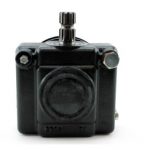LawnEQ is a trusted source for genuine OEM Parts- Shop for the part you need from your favorite manufacturers such as Landpride, Toro, and more today on our OEM Parts Lookup Tool!
Fighting weeds is a year-round battle, constantly pulling them out by the roots, applying weed killer, and otherwise trying to bring them under control. Even as fall approaches, and lawns an gardens begin to fade and go dormant, weeds continue to thrive.
What Fall and Winter Weeds Should I Worry About?
The biggest worry in the fall and winter should be the perennials. Annual fall weeds like foxtail and knotweed will die off after one season. Perennials will sink roots and return year-after-year if not treated, and need to be your target, along with developing winter annuals. This includes weeds such as:

Canada Thistle, courtesy Daryl_Mitchell via Flickr
- Canada thistle (perennial)
- Field bindweed (perennial)
- Poison ivy (perennial)
- Marestail (winter annual)
- Shepherds purse (winter annual
How Should I Deal With the Weeds?
There are a number of different ways you can address weeds throughout your lawn and pasture.
The first thing to do is identify the weeds that have cropped up in your lawn. This will help you figure out the best way to attack them. Some may be able to be pulled from the ground and you’ll never have to worry about them again. Others may have underground runners that you’ll need to pull out or you’ll end up seeing the weeds return.
Once you identify them, the first method of attack should be through manual removal. Using picks, specialty tools, and trowels, try to remove the plants by hand and dispose of them in the trash.
Chemicals can be used to control the weeds as well. One reason to identify the weeds first is to make sure you choose the right herbicides. Not all herbicides will be effective against different weeds. You don’t want to waste time and money using the wrong herbicides. Isoxaben is the most common chemical when it comes to treating winter weeds, followed by atrazine. That doesn’t necessarily mean that you should be using it, though – make sure to research in depth.
Fall is Also a Time to Prevent Weeds
Taking care of your lawn and garden thoroughly in the fall and winter can help prevent weeds when the spring thaw comes around.
If you have thin areas of your lawn, overseed them and water the seed in. Weeds take advantage of the areas where grass has not filled in and grown strong roots. The heavy coverage will give the weeds too much competition and prevent them from getting nutrition and sunlight.
Chemical treatment doesn’t just work to kill emerged weeds, it can also be used before the weeds pop up. Pre-emergence chemicals will attack the weeds even before they’ve popped their head above ground. Often, the best way to go with chemicals is to go with a combination that is both pre- and post-emergence. Make sure not to apply the herbicide too late, though, as some of it can last for up to 40 or 45 days and can cause harm to grass as it comes back through.
So hit your lawn hard this fall, and do yourself a favor. This will certainly help out when spring rolls around – you’ll have a lot less to worry about and dig up. A little bit of work now will save a lot later.






